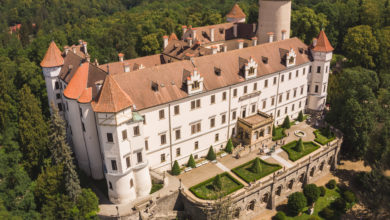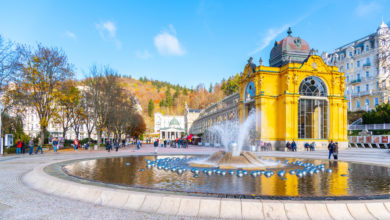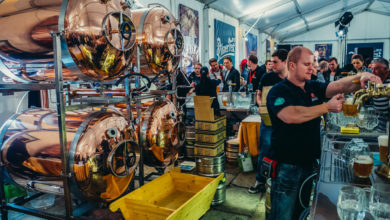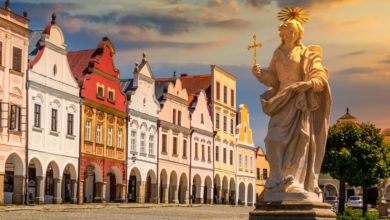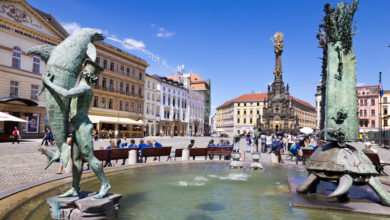Mladá Boleslav
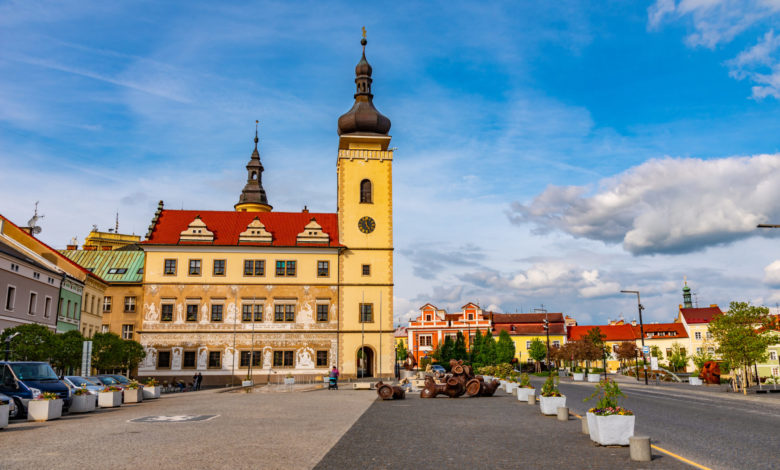
The History of Mladá Boleslav Spans Over a Millennium
Knight Boleslav II built a castle on the confluence of the Jizera and the Klenice Rivers in the middle of the l0th century, and a small market settlement with a church soon developed around it. A step in the right direction was the transfer of Mladá Boleslav to a vast plateau in 1334, on which a medieval city started emerging. It soon came to be owned by the Lords of Michalovice, who resided in a castle on the other bank of the Jizera. The place is now marked with ruin with the inclined round tower called Putna. There were good times and bad times in the history of Mladá” Boleslav. The city came to be known all over the Bohemian Kingdom between the late 15th and early 17th centuries, the times of Unitas Fratrum. The purely national religious movement influenced education, book printing, architecture, and social life. The “Fraternal Rome”, as Mladá Boleslav was nicknamed at that time, was the seat of Bishops and other Church Officials. The printing shop of Mikuláš Klaudián was there, the author of the first printed map of Bohemia, where many religious and scientific books were published; the religious school produced many scholars who continued their studies in universities all over Europe. The castle went through a costly redevelopment into a Renaissance château; the new Town Hall and a monumental Unitas Fratrum Congregation were built in 1554. The period that followed the Battle of the White Mountain had two dominating features: re-catholicising by force, through which many Protestant families were expelled, and military crusades of the imperial and Swedish armies that plundered the country during the 30 Years’ War, striking the economy and deepening general poverty. But the very late 17th century brought the first signs of new hope: the population was growing again, old wounds began to heal, and the coming baroque was changing the city looks, adding a touch of beauty and splendour. The 19th century triggered a new era. Textile factories introduced industrialisation, the city was increasingly Czech speaking in the 1860s, and there was a rapid growth of crafts, trade, and industry. In 1895 two enterprising men, the engineer Václav Laurin and bookseller Václav Klement founded a bicycle shop. Three years later, motorbike production was started here, and in 1905 the famous Voiturette, their first car with a one-litre engine and the fantastic top speed of 25mph, roared through the factory gate. Thus a tradition was born which made the Laurin & Klement, and later Škoda trade marks members of the exclusive world club. Being one of the Czech economy’s flagships, today’s joint-stock company provides some 15,000 jobs, exporting cars to over 60 countries.
With a Population of 50,000, Mladá Boleslav Is an Interesting Place to See
There are several medieval castles in the region (Michalovce, Bělá pod Bezdězem, Benátky nad Jizerou, Mnichovo Hradiště, etc.). Sacral buildings offer a variety of styles – Romanesque (Vinec, Mohelnice), Gothic (Mladá Boleslav, Bezděz, Vlčí Pole), Renaissance and Baroque (Lorette at Kosmonosy, Mnichovo Hradiště, Bezno, Bělá pod Bezdězem, Dobrovice, etc.). Modern architecture is represented by J. Kroha, O. Döbert and others. The lives of several celebrities of Czech literature, music, science and art are linked with the region: composer Fridrich Smetana spent the last nine years of life in the gamekeeper’s lodge at Jabkenice; outstanding musicians the Benda brothers were born in Benátky nad Jizerou; poet Karel Hynek Mácha used to ramble through the country, seeking inspiration; the family of poet and journalist František Gelner was based in Mladá Boleslav. There were moments when European history was made here – in 1833 the three emperors of Austria, Prussia and Russia met in the château of Mnichovo Hradiště; the domain was owned by Václav Budovec of Budov, the leader of the Estates Rebellion of 1618-1620, and later by the almost mythical Albrecht of Wallenstein who was buried here. The château archives include the Wallenstein library administered by Giacomo Casanova at his time. The château of Benátky nad Jizerou hosted the Danish astronomer Tycho de Brahe, and Johannes Kepler stopped for a visit here, too. The Neuberk château near Mladá Boleslav was the family seat of the noble family of the same name who supported the then new National and Industrial Museums in Prague a great deal. The château of Niměřice was home of Rudolf Thun-Taxis who largely supported the founding of the National Theatre in Prague. The library of farmer Jan Krouský yielded the Manuscript of Karel Hynek Mácha’s Máj poem. Mladá Boleslav and its surroundings are worth seeing.
Minibus Prague-Mladá Boleslav. Alternative to train or bus. Book cheap door to door private minibus.

